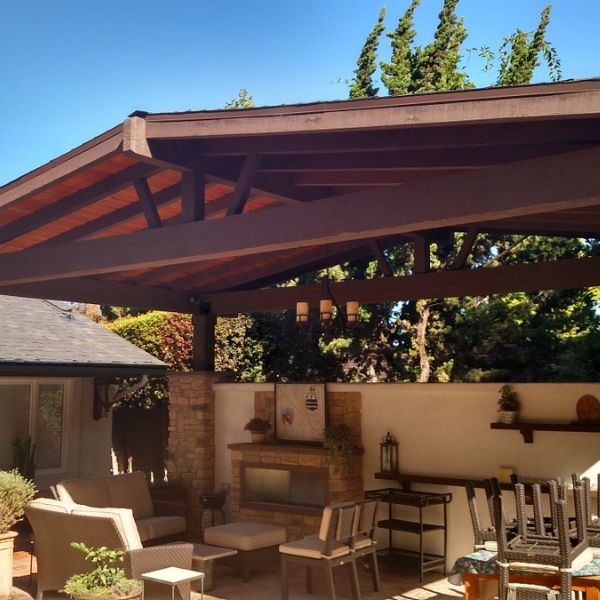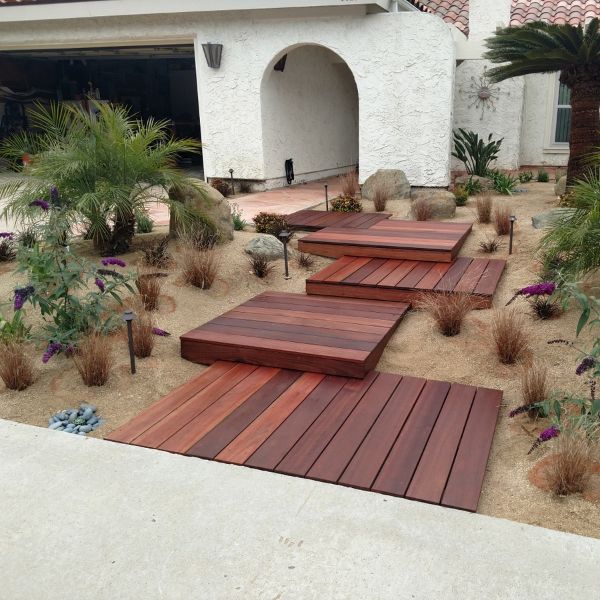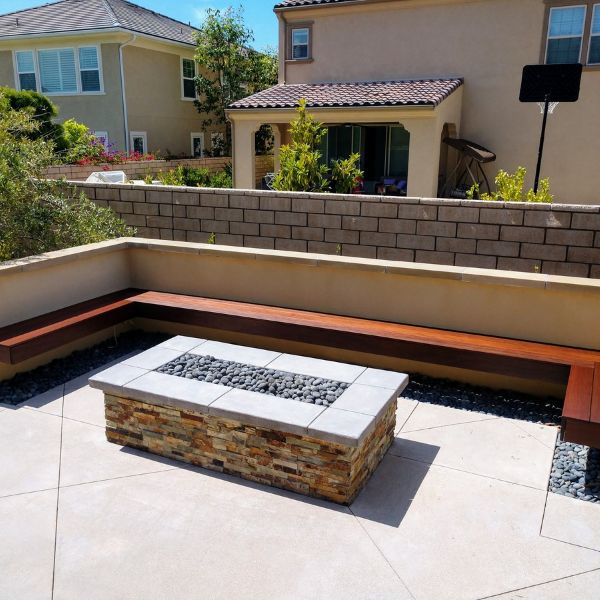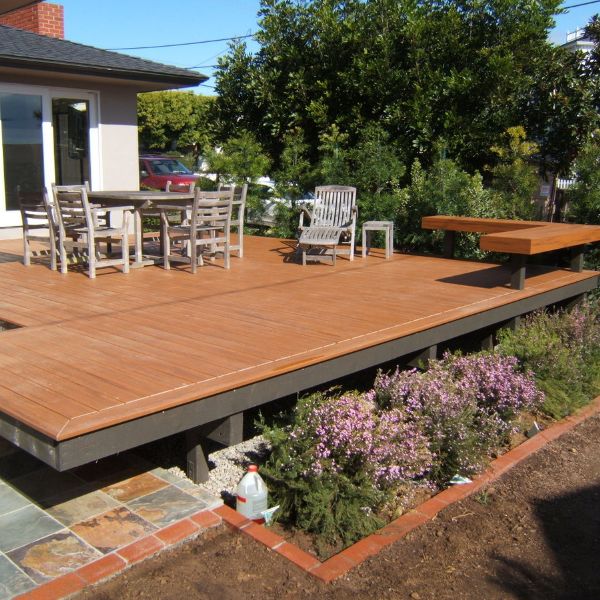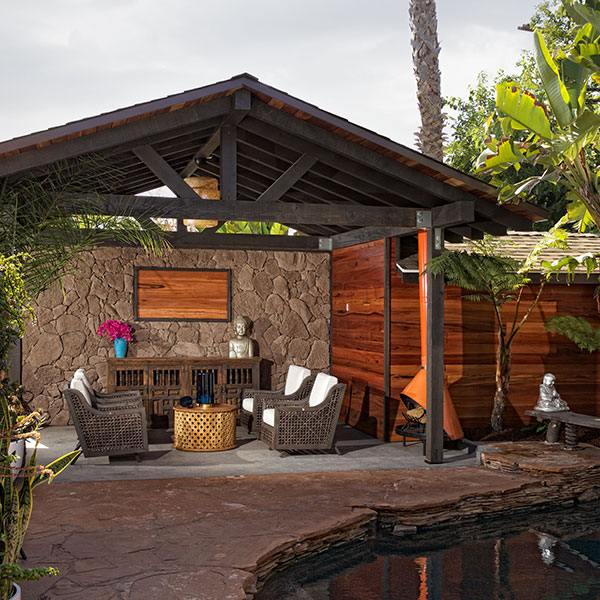Our San Diego Deck Contractor Can Bring Your Outdoor Living Space Vision to Life
Are you searching for a deck builder in San Diego to elevate your outdoor living space? At Wilson Woodscape, we specialize in crafting stunning free-standing decks that blend seamlessly with San Diego’s iconic landscapes and laid-back lifestyle.
Whether you’re envisioning a peaceful retreat in your backyard or a show-stopping platform for entertaining, our skilled landscape contractor is here to make it happen. Call us today at (619) 123-4567 for a free consultation and see why we’re the go-to deck builder San Diego residents trust!
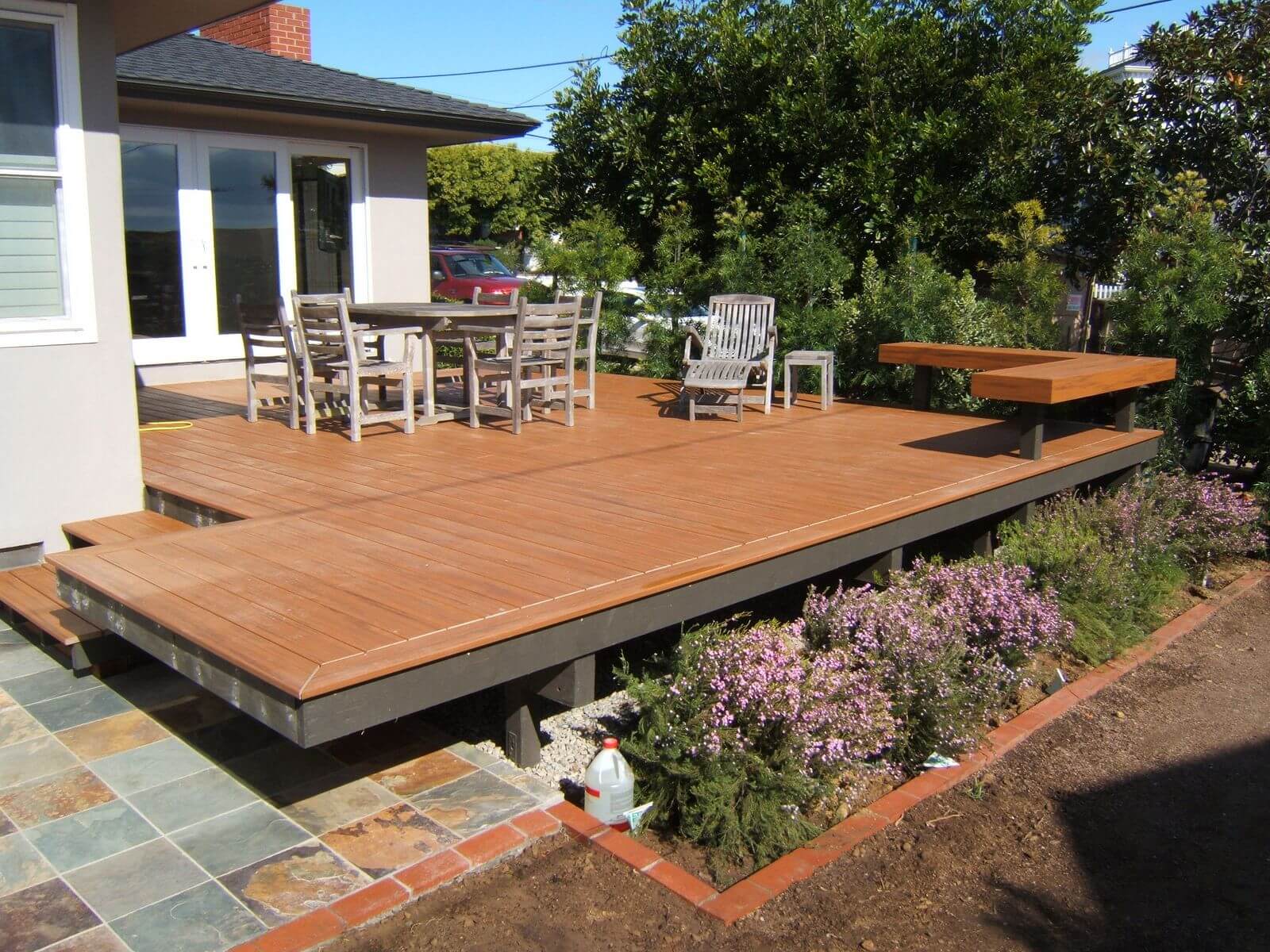
What Is a Free-Standing Deck?
A free-standing deck is not attached to a home or other structure. Instead, our San Diego deck builder will design your deck as self-supporting, with sturdy posts or piers anchored directly into the ground. Free-standing decks are an excellent option to create an outdoor living space separate from your home or if your home’s structure can’t support an attached deck.
A free-standing deck offers unmatched flexibility, allowing you to create a custom outdoor space anywhere on your property without attaching it to your home. From the sandy shores of Coronado to the rolling hills of Poway, our deck builder in San Diego designs decks that fit your unique yard and lifestyle.
Choose Wilson Woodscape for Your Free-Standing Deck
If you’re considering building a freestanding deck, look no further than Wilson Woodscape. Serving San Diego for over 25 years, Jeff Wilson specializes in custom woodwork and innovative designs for freestanding decks. His full-service landscape construction offerings ensure that your project will be handled with professionalism and attention to detail, resulting in a deck that exceeds your expectations.
Wilson Woodscape’s unique and captivating designs are complemented by Wilson’s use of custom ironwork, woodwork, and other finishing touches, elevating the appearance of your deck. By choosing Wilson Woodscape, you’re investing in a high-quality, durable deck and also a work of art that will add value and enjoyment to your property for years to come.
Get your free estimate today by contacting our San Diego deck contractors at (619) 123-4567.
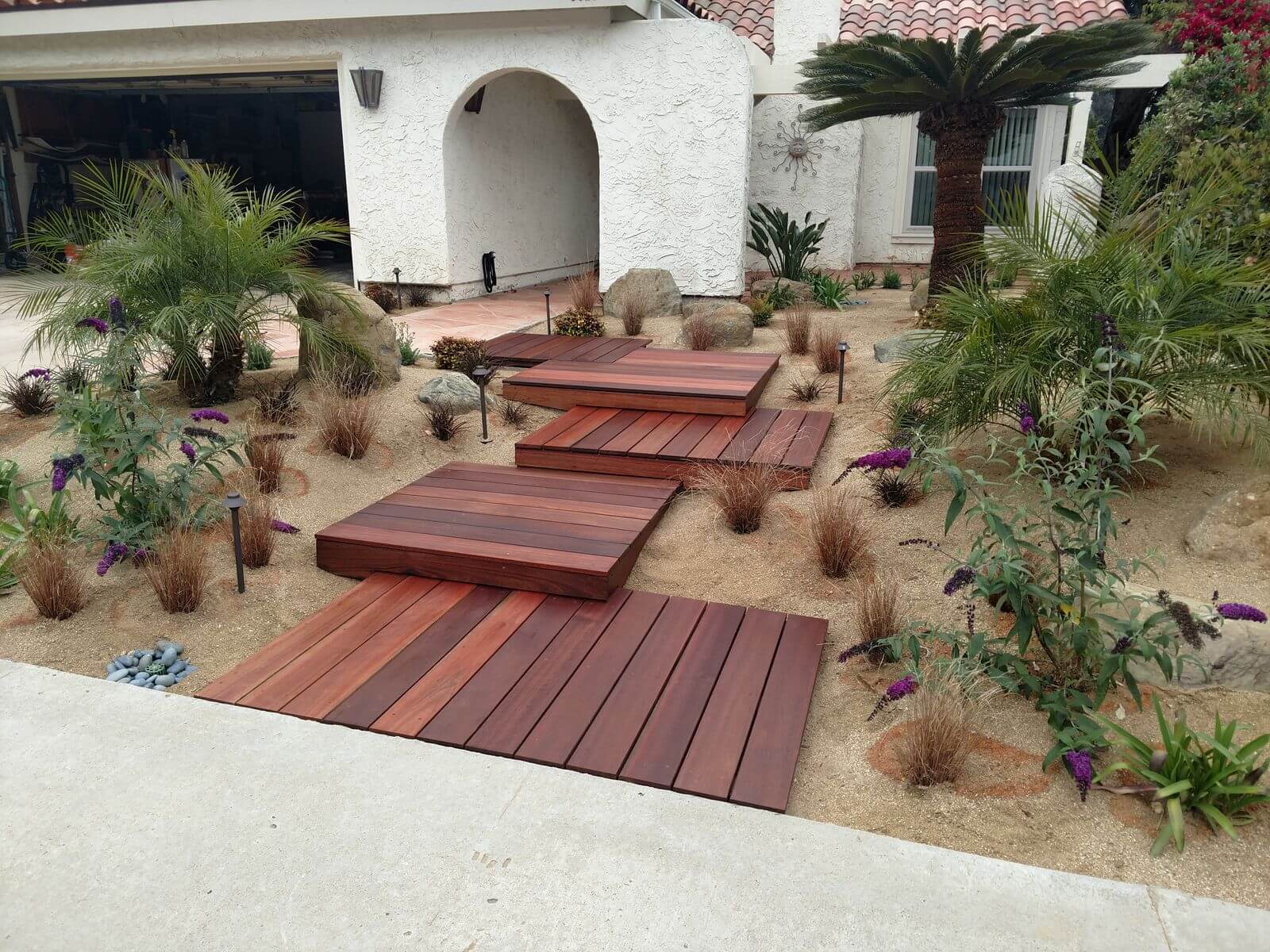
Our Deck Building Process in San Diego
Personalized Consultation
We begin with a visit to your San Diego home to discuss your ideas and evaluate your space. We’ll suggest designs that enhance your property, from modern decks for downtown condos to rustic builds for Ramona ranches.
Site Assessment and Prep
San Diego’s geography varies widely, from sandy soils in Imperial Beach to rocky ground in Tierrasanta. We analyze drainage, slope, and soil stability to ensure a solid foundation that lasts for decades.
Expert Construction
Using high-quality materials like redwood, cedar, or composite decking, we build your deck with meticulous attention to detail. We follow San Diego County regulations while adding custom touches like railings, stairs, or lighting.
Finishing and Protection
We apply stains or sealants to shield your deck from San Diego’s intense sun and salty air. Our cleanup leaves your yard spotless and ready for enjoyment.
Final Walkthrough
We inspect every inch with you to ensure it meets our standards and exceeds your expectations.
Ready to start? Call (619) 123-4567 today and let Wilson Woodscape, your San Diego deck builder, create a deck you’ll love!
Best Materials for San Diego Decks
San Diego’s climate demands materials that can handle the sun, salt, and the occasional storm. Here’s what we recommend as your deck builder in San Diego:
- Redwood: Naturally resistant to rot and insects, ideal for coastal areas.
- Cedar: Lightweight and stunning, perfect for sunny spots.
- Composite Decking: Low-maintenance and fade-resistant, a top pick for busy homeowners.
- Pressure-Treated Wood: Budget-friendly and sturdy, great for inland areas.
Frequently Asked Questions
Prices for free-standing decks range from $10,000 to $35,000, based on size and materials.
With proper care and maintenance, a well-built deck can last for 20 to 30 years or more. The lifespan of a free-standing deck will depend on several factors, including the type of wood or other material used, the climate in your area, and how well the deck is maintained.
For a basic 12-foot by 12-foot freestanding deck, you will need at least three 12-inch diameter deck footings. However, additional footings may be needed depending on the size and shape of your deck, the size of your footings, and the size of your beams.
Our San Diego Landscape Contractor Can Transform Your Outdoor Space
You deserve a space in your yard to relax and feel at home. That’s why Wilson Woodscape’s designers and contractors are proud to create free-standing decks that your friends and family will love. We’ll work with you to accomplish your decking goals and find the best way to maximize your outdoor space. Discover how Wilson Woodscape can create your dream yard by contacting us at 619-838-1398.

